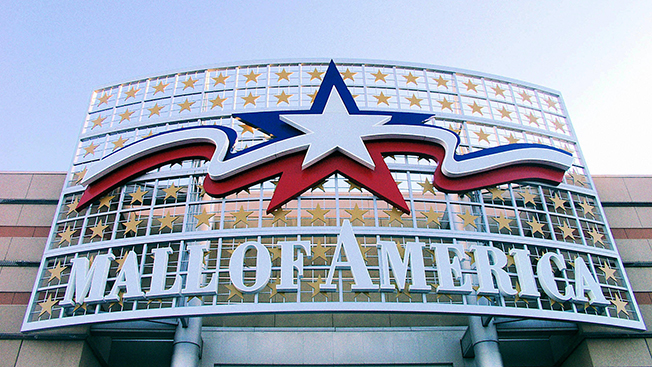At the Mall of America in a suburb just south of Minneapolis, shoppers walk 1.15 miles just to make their way around a single level of the sprawling shopping destination visited by 40 million people every year. And with multiple floors in total comprising around 5.6 million square feet of total building area—enough to fit nine Yankee Stadiums—some might find it handy to have a digital guide for navigating the nation's largest shopping center.
The mall—call MoA by the locals—has partnered with IBM to integrate the company's Watson technology to create a "mobile concierge" that helps shoppers make their way around. Using Watson's conversational API, a holiday-themed chatbot—fittingly named "E.L.F." (short for Experience List Formulator)—helps guests plan a personalized shopping experience based on whatever they're looking for.
E.L.F., created in partnership with Satisfi, guides guests through a series of questions related to how much time they have to spend and what types of activities they're looking for. (After all, the Mall of America has a Nickelodeon theme park on the inside—along with a Lego play area and aquarium.) The chatbot, available on Facebook and via mobile browser, then offers a selection of retailers, rides and other activities during the allotted time period.
"The holiday season is upon us and, for many, this represents the most hectic shopping period of the year," Don White, CEO of Satisfi, wrote. "Whether you're navigating crowded shopping centers or debating what gifts to buy, the in-store experience can be particularly overwhelming."
E.L.F. is just one of a number of chatbots that retailers have begun using for the holiday shopping season to integrate artificial intelligence. (Working with Snaps, Nordstrom also created a digital shopping assistant for the holiday season with its first chatbot on Facebook Messenger and Kik.)
Along with E.L.F., Satisfi and Watson also created a similar bot for Fashion Island in Newport Beach, Calif. The bot, named "At Your Service," takes an text message approach to help guests know where to eat, where a brand's store is located or where to find a specific item of clothing.
"For guests at Fashion Island who want to know where they can grab a burger or sushi, or where they can find a cocktail dress for their holiday parties, the answers are now available via text message," White wrote. "Guests simply text (949) 734-7364 and ask anything from 'Where is Neiman Marcus located?' to 'Where are the restrooms?'"
Having gained popularity over the course of 2016—thank to launches by Kik, Skype and Facebook—this year is the closest chatbots have ever been to being in vogue. And while the IBM chatbots are built as shopping guides, new data suggests shoppers might actually be ready to buy from bots as well. According to research released this week from DigitasLBi and Harris Poll, more than a third of U.S shoppers surveyed said they'd be willing to purchase something through a chatbot and spend as much as $55.80 on a purchase.
Bots are by no means as popular Legos or Tickle-Me-Elmos. In fact, only one in five Americans have even heard of chatbots, despite big brands like Uber and 1-800-Flowers debuting their own with various functions earlier in the year. However, that doesn't mean they're not interested. According to the research, 48 percent of millennials surveyed said they have received recommendations from a chatbot or would be willing to in the future. What's more is that nearly two thirds (59 percent) of all people surveyed said they'd be up for receiving offers and coupons.
According to Jill Sherman, svp of social strategy at DigitasLBi, regardless of whether a bot is acting as an assistant, concierge or some other form of service provider, if a consumer sees a clear benefit, they're going to be more likely to purchase.
But not all bot news is entirely promising. Like many types of technology, a bad first impression could shut them down for a while. Digitas and Harris Poll found that around 73 percent of people said they would not use a brand's chatbot a second time if something went wrong right away. Consumers in higher income brackets also seem to be more bot-averse, with 28 percent of those with household incomes above $100,000 said bots feel invasive if they remember past interactions. (That number falls to 20 percent for households earning less than $50,000.)
"Smartphone users want fewer apps doing more work, and chatbots are one way of making that possible," Sherman said in a statement about the research findings. "But for retailers to benefit from the bot opportunity, they need to convince consumers that commerce through a chat interface—instead of a traditional website or app—is as easy as texting a friend, but with more perks."








